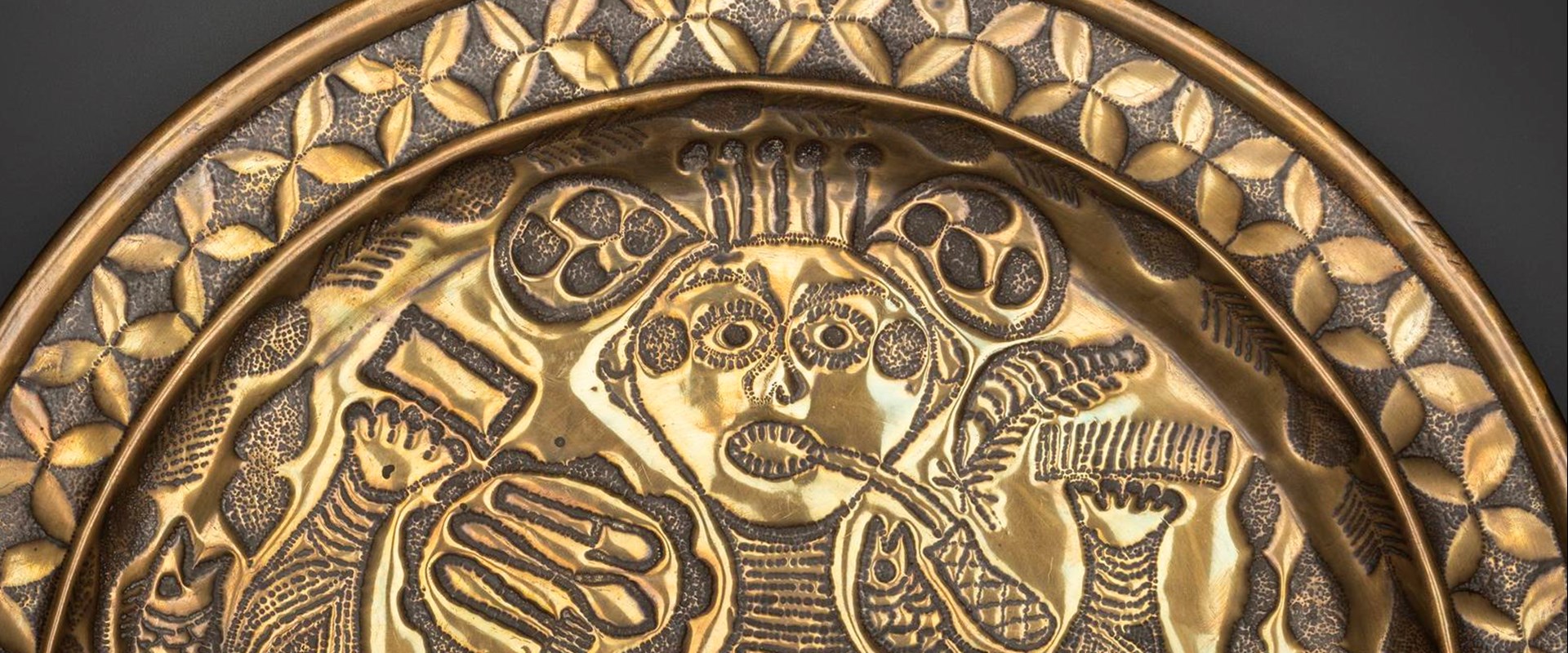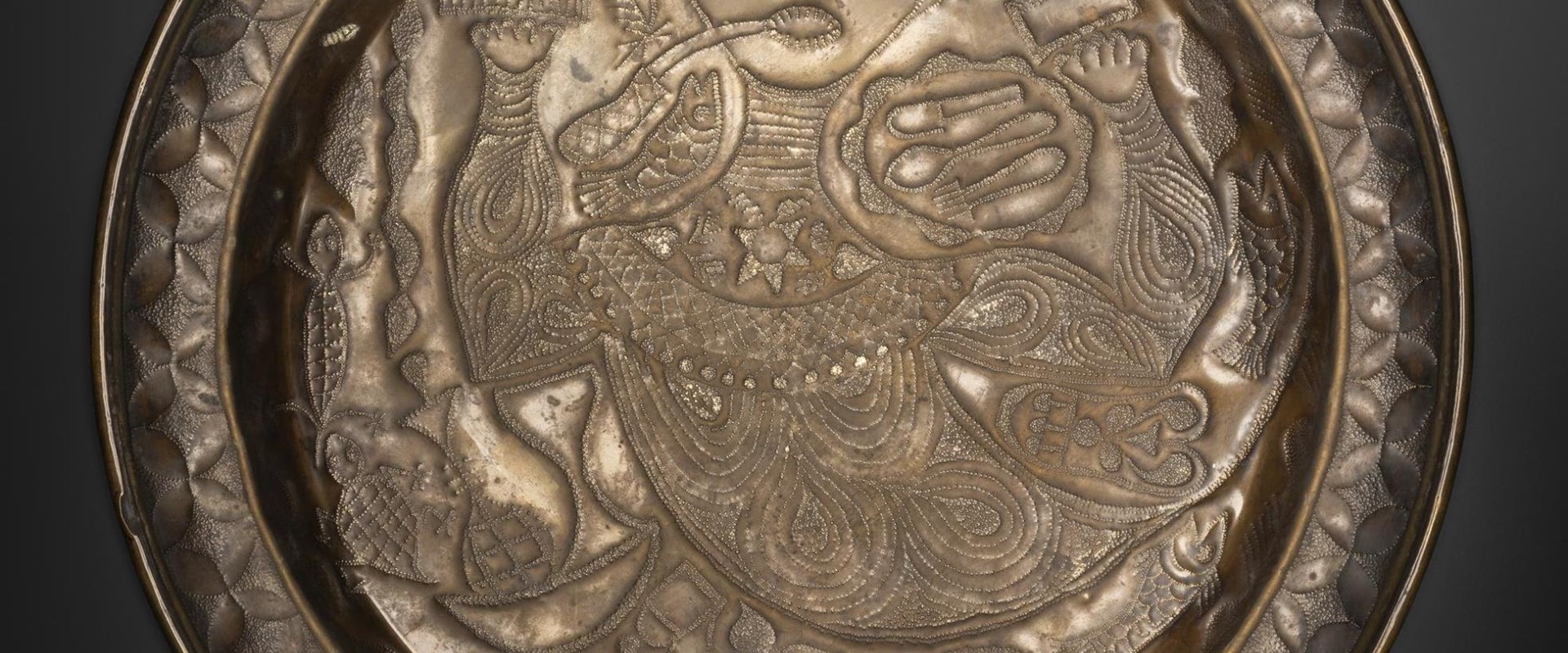Key in a search term below to search our website.
Key in a search term below to search our website.

This embossed object is one of thousands of shallow brass basins, bowls and trays from Europe which were traded extensively along the west coast of Africa.
Date
Early 20th century
Decorated in
Old Calabar, Southern Nigeria, West Africa
School / style / culture
Efik/Ibibio
Made from
Brass
Dimensions
Diameter 460 mm; Height 37 mm
Museum reference
Did you know?
Brass, an alloy of copper and zinc, was imported from Europe to west Africa from the late 15th century and quickly became desirable and valuable. By the 19th century, brass was being produced on an industrial scale - turned out by the ton in Birmingham brass foundries - for demanding African markets with regional preferences for different types of brassware.
On display
The Mami Wata brass tray will be on display in The Art of African Metalwork display at the National Museum of Scotland until 25 August 2019
The tray features a female figure, which is most likely a depiction of the water spirit Mami Wata (Mother Water). Mami Wata is celebrated throughout much of Africa and the African Diaspora.
Often portrayed as a mermaid, a snake charmer, or a combination of both, she is beautiful and alluring, protective yet dangerous. She is representative of female power and one of a pantheon of related African water spirits which honour the essential, sacred nature of water.
This tray is in a regional style and also features water symbols associated with arts of the Efik and Ibibio people. You can see representations of fish, crocodiles and turtles. Her body decoration and hair represent local styles, while her bared teeth indicate her powerful nature and her crown is a symbol of her otherworldliness. In her hands are a mirror and comb, symbols of a mermaid.
In the 19th century, the craft of decorating brass trays and bowls imported from Birmingham began among Efik women in Duke Town, Calabar, an important trading port on the coast of Nigeria.
This tray is a fine example of this punched or chased metalwork decoration. Small metal tools with shaped ends are used to give impressions such as dots, lines or semicircles. These are then lightly held against the surface of the metal and tapped with a hammer to give the required detail and texture.
These objects had a variety of uses, ranging from utilitarian to objects of display for local ceremonial use, trade, gifts and souvenirs.

Detail on reverse of tray
This object is a symbol of the long held and complex connections between Europe and Africa. It is a fascinating example of how one object, mass produced in England for trade with the African market, was transformed into a unique piece with significant cultural resonance in the Calabar region of west Africa, and then took the return journey to Scotland.
Was it a gift of diplomatic exchange? Was it created for the souvenir market? Or was it intended for local ceremonial use? Acquired by the Museum from a dealer in 1911, unfortunately the museum records provide no further clues about the journey this object has made.